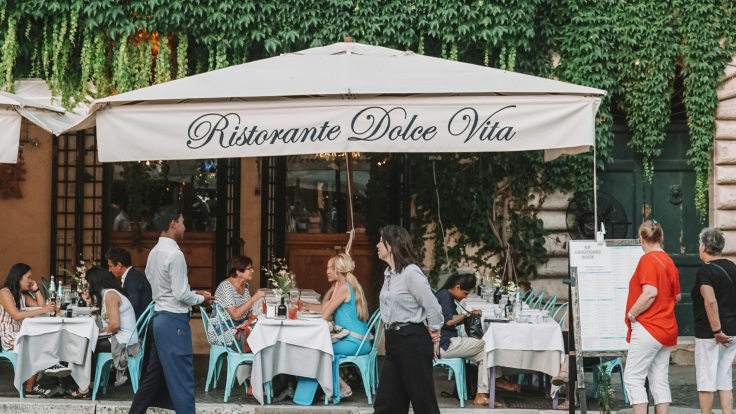Italians Demand an End to 'Monstrous' Al Fresco Dining Trend Loved by Tourists
The COVID-19 pandemic has made it easier for the government to grant restaurants with outdoor seating licenses

Italy, renowned for its rich cultural heritage and exquisite cuisine, remains a top holiday destination, particularly the capital city of Rome, which attracts between 7-10 million tourists annually. However, a growing frustration is evident among locals regarding the popular tourist trend of al fresco dining, where restaurant visitors eat their meals outdoors. This trend is especially prevalent during the summer when Rome's temperatures soar, creating an appealing environment for outdoor dining.
Locals are increasingly annoyed as more restaurants serve customers outside, occupying valuable pavement space with extra chairs and tables. This congestion hinders residents from walking freely and parking their vehicles. Furthermore, noise pollution has surged, becoming disruptive late in the evening and early morning as tourists dine late into the night. Consequently, some residents have labelled this outdoor dining trend as "monstrous," indicating their displeasure with how it impacts their daily lives.
Despite local discontent, food businesses are capitalising on the popularity of al fresco dining among tourists. Nearly 200,000 establishments nationwide have obtained outdoor seating licences in the past three years. For many businesses, offering al fresco dining is "fundamental" to avoid financial losses, especially since the government simplified the licence process during the COVID-19 pandemic to aid the struggling restaurant industry. The move aimed to help restaurants recover financially by allowing them to serve more customers safely in open-air environments.
This governmental decision has continued post-pandemic, with the Minister of Enterprises, Adolfo Urso, recently announcing plans to extend outdoor seating licences indefinitely. Residents feel this prioritises tourists over locals, exacerbating their frustration. The annual cost for these licences ranges from €1,000 to €4,000, depending on the location and space. These fees are a small price for businesses compared to the potential revenue from the increased seating capacity.
Since 2021, the space allocated for al fresco dining in Rome has increased fivefold to 112,000 square metres. This situation has led Rome's councillors to express their frustration with the central government's decision. Monica Lucarelli, the city's vice-mayor for commerce, deemed it "absurd and unacceptable" for local interests to be determined by national officials. She emphasised that the voices of the local community should be heard and respected when making decisions that significantly impact their daily lives.
Carlo Rienzi, head of the Codacons consumer group, also opposes the extension, arguing that increased al fresco dining "violates the city of Rome, destroying its beauty" and causing "enormous damage to citizens" with the proliferation of tables, chairs, and umbrellas on the streets. He believes that the visual clutter and increased noise detract from the city's historic charm and serenity, ultimately harming both residents and the authentic tourist experience.
Rome is not alone in facing backlash; Milan residents have also complained about the trend, particularly the noise from late-night diners. In response, Milan imposed a 12:30 a.m. curfew for al fresco dining on weekdays, extending to 1:30 a.m. on weekends. This measure aims to balance the economic benefits of al fresco dining with the need for peace and quiet in residential areas.
The debate over al fresco dining highlights a broader conflict between tourism-driven economic growth and preserving the quality of life for local residents. While tourists enjoy the relaxed, outdoor dining experiences that cities like Rome and Milan offer, the residents endure the consequences of overcrowded pavements and increased noise levels. The challenge for city officials is to find a compromise that supports local businesses while respecting the needs and rights of the residents.
As Italy continues to welcome millions of tourists each year, finding sustainable solutions to manage the impacts of tourism on local communities remains crucial. The ongoing discussions around al fresco dining regulations reflect the need for thoughtful urban planning that balances economic vitality with the well-being of its citizens.
© Copyright IBTimes 2025. All rights reserved.






















